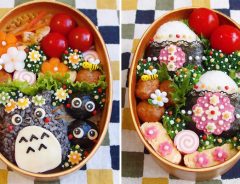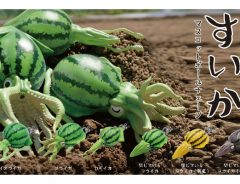Related Article
-

Pen Pineapple Apple Pen Is The Only Song You Need To Hear This Year
-

Japanese Instagrammer’s Bentos For Her Husband Takes Packed Lunches To A New Level
-

“World’s First” Anime Eyeglasses Shop Opens In Akihabara
-

Kyoto’s Bookstore Themed Hostel A New Haven For Lovers Of Literature And Beer
-

Watermelon squid hybrids are Japan’s new Cthulian terror
-

Japanese School Girl Absolutely Owns Crane Game, Hits Jackpot In Best Way



Osechi Ryori are traditional dishes enjoyed by Japanese people during New Year’s and consists of various foods packed in jubako, boxes similar to the bento boxes.
Each of the dishes holds a special meaning in welcoming the New Year and in this article, I will explain in detail what each of the items in osechi ryori symbolizes and the meaning and types of the New Year’s ozoni soup.
Main categories and types of Osechi Ryori
Osechi Ryori is very similar to the Japanese traditional multi-course dinners (also known as kaiseki/kaiseki-ryori) and is broadly divided into five categories:
1. Iwai zakana san-shu (祝い肴三種/3 lucky dishes)
2. Kuchi Tori (口取り/hors d’oeuvre/appetizers)
3. Yakimono (焼き物/grilled dishes)
4. Sunomono(酢の物/vinegar dishes)
5. Nimono(煮物/simmered dished)
The stacked boxes osechi ryori are usually placed on top of each other and it is said that by doing so, you pile up happiness and fortune for the year to come.
The number of items in osechi can depend on the region but it is around 20-30 dishes. The most frequent ones are:
1. Kuromame(sweet black beans) that keep you healthy and give you enough power to work the year to come because black is the color of tanned farmers that work diligently throughout the year, therefore it represents the color of hard work.
2. Kazunoko(herring roe) as it has a large number of eggs, it is thought of as a lucky charm that people eat for lots of offspring
3. Tadzukuri or baby anchovies for rich harvest; anchovies being used as high-grade fertilizers for rice fields in hope of having abundant harvest.
4. Tataki Gobou(Seared burdock) because of its roots that go deep in the ground, the burdock is the hope for having a house with a solid foundation.
5. Kamaboko(a type of surimi): red for amulet and white for clean
6. Datemaki(sweet rolled omelet) for knowledge
7. Kinton because of the kanji 金団 became a lucky item that calls upon gold fortune.
8. Kohaku Namasu(pickled daikon and carrot) for peace
9. Tai no sugatayaki(Seared grilled sea bream) because it is the fish Ebisu sama holds in his hands and is perfect for such happy occasions.
10. Buri no Teriyaki(Japanese amberjack teriyaki) in hopes for success
11. Kurumaebi(prawns) for longer life
12. Nihamaguri(boiled clams) lucky symbol for marriage
13. Kombu Maki for good luck and prosperity
14. Chikuzenni(Chikuzen stew/braised chicken and vegetables) for long-lasting happiness
The Japanese New Year Mochi Soup: Ozoni (お雑煮)
Ozoni soup is usually eaten with the Osechi dishes during Oshougatsu in Japan and can take different forms depending on the region or household.
Sometimes colorful ingredients such as kamaboko, carrots, shiitake can be used, but the basic ingredients found in most places are mochi, chicken, vegetables, and komatsuna (Japanese mustard spinach).
In Kanto, Kyushu and Chugoku ozoni is prepared with clear miso soup and dashi from bonito and soy sauce, while in Kansai you will find kombu dashi with white miso. Tottori prefecture has a whole different take of ozone and they make it from azuki red bean soup and mochi.
Even the shape and way the mochi is cooked differ from each region, in some parts being rectangular shaped and grilled, then added to the soup, while others boiled it and use a round shape type of mochi.
If you are in Japan during New Year, I recommend trying out Osechi Ryori and ozoni soup from different regions and enjoy it with your family and friends.